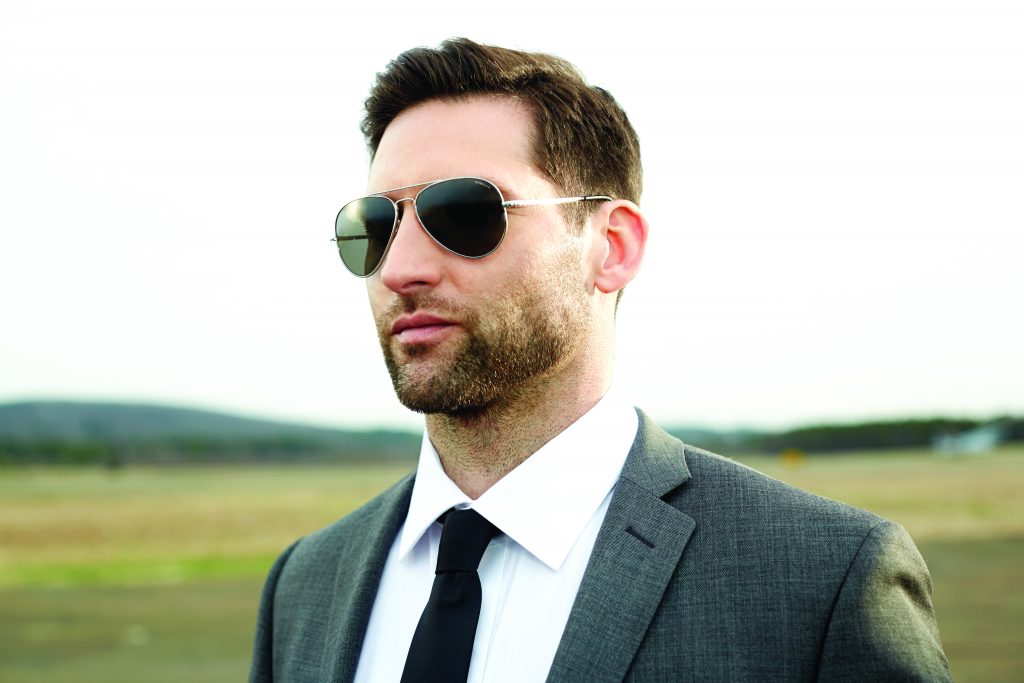What are Aviators? Compare Aviator Sunglasses: Navigator, Teardrop, Round & More
At Randolph Engineering, we have decades of manufacturing under our belts. Our origins date back to a time when artisan handcrafting was the only way to create shades.
We’ve kept this tradition alive in order to provide the highest quality, most durable aviation sunglasses to the US Military.
Nearly all Randolph frame styles can suit aviation, and our SkyTec™ lens technology offers pilots superior optics. Most pilots wear non-polarized lenses. We honor this need among others.
The exact frame shape of the aviator is a different story.

What Are Aviators?
An authentic aviator is typically metal, non-polarized, protects from UVA/UVB rays, offers around 15% light transmission and contains a lens size to fully cover the eye.
Aviator Sunglasses History
The very first aviator dates back to just before WWII. The teardrop shape was originally designed to provide full eye coverage by dipping down below the pilot’s cheeks. However, this style soon evolved.
Randolph Engineering’s President & CEO, Peter Waszkiewicz, recalls the history of aviator sunglasses and how Randolph was born from aviation.
The evolution from teardrop to square was due to changes in technology, flight suits, and helmets. There became a need for a frame to fit under helmets as well as under the visor.
A rectangular frame could fit in between headgear, whereas the teardrop frame could not.
Full coverage is no longer exclusive to a teardrop style today. Pilots eventually required excellent eye coverage that could also fit beneath a helmet visor, and next-generation engineers stepped up to solve the challenge.
When a pilot’s visor would flip down, the 52mm frame was engineered to fit perfectly; the hinges on the frame would not rub and were a perfect fit for pilots. Plus, the bayonets are easy-slip on and off.
These days, headgear has evolved again and the military buys all three sizes from us in the present day.
– Peter Waszkiewicz, President & CEO, Randolph Engineering

In 1958, the navigator shaped style came to be based on standard military specifications of the time and a heated battle between manufacturers for limited military contracts.
In 1973, Randolph Engineering joined the competition for creating the ultimate pair of military aviators. Durability, scratch resistance, non-corrosive plating, lifetime guaranteed solder joints, enhanced lens technology, and a convex lens shape joined together for Randolph’s flagship Aviator.
Our military contract began in 1978. Over the decades, we’ve continued to perfect this design and now we’re reinventing it for extraordinary adventurers and beyond.
Today, the same military standards no longer exist as the US Military now uses commercially available products, but Randolph has never compromised on the quality we were founded on.
The Navigator Style
Square to rectangular aviators are often called “navigators.” Randolph’s navigator style is our flagship Aviator, designed to meet the greatest needs in modern military aviation.
Randolph’s Aviator is built to MIL-S-25948 standards, a 20-page document detailing the most demanding, complex manufacturing specs around.

The Teardrop Style
The iconic teardrop style was the original WWII aviator. Military pilots arrived home from the war sporting this style and pop culture adopted it as a modern trend.
Randolph’s Concorde pays homage to the original aviator shape.

The Round Style
Military submariners require unique lenses, too. This shape’s specifications were originally designed to fit under gas masks in the case of a submarine fire. Many celebrities also adopted this rounded style, which dates back to some of the first spectacles ever invented.
Randolph’s P3 is designed for submariners with a smaller round lens. Some pilots enjoy wearing the P3 while in flight as a personal choice.

Aviator Styles Reinvented
Round, square and teardrop are three legendary aviator shapes. Randolph honors where we come from and we’re reinventing where we’re going by pairing unique shapes with aviator features.
Many women’s sunglasses by Randolph are tailored to distinct fashion taste. Some offer the aviator style for smaller face shapes, such as with Thaden or Hawk, and other styles have reimagined the teardrop shape, such as with Noyes and Amelia.
Many men’s styles offer bolder angles, strong brow bars, new nose bridges and more. Intruder is a wider navigator style, and Yeager is a rounded teardrop style.
But aviators are commonly known as a neutral unisex style. Douglas and Hamilton are examples of geometric styles that can suit men and women equally.
Do you wear Randolphs?
Follow us on social media for a chance to be featured on our page. We’re always on the lookout for fans sporting our styles. Follow us on Facebook, Instagram, Twitter and Pinterest, and tag us while using #MyRandolphs.









